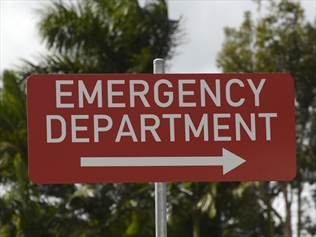
Medical experts say the lifesaving drug naloxone must become available to reduce opioid overdoses. Source: AAP
HEALTH experts, researchers and practitioners are calling for a lifesaving antidote for victims of drug overdoses to be more widely used in regional and rural Australia.
NALOXONE has been used in hospitals and by paramedics for decades to reverse overdoses from heroin and prescription painkillers.
It’s available by prescription for drug users, their families or friends and costs a little more than $1 per injection. On Tuesday, emergency doctors, drug researchers and primary health providers came together at the Australian Drugs Conference to discuss how to increase access to naloxone, including making it available over the counter. “More people need to know that they can obtain a prescription for naloxone,” said John Ryan, CEO of the Penington Institute, the host of the Melbourne conference. “Naloxone is a lifesaving drug that can be prescribed so that friends and loved ones can reverse an opioid overdose safely as part of a broader plan, which includes calling an ambulance.” The Australian Medical Association endorsed naloxone provision to potential overdose witnesses, including drug users, in 2012. It said at the time that “properly administered and supported naloxone distribution programs, involving suitable training, had the potential to save lives”. Penington Institute operates a program to tackle opioid overdoses using public education and naloxone prescribing in Victoria. There are similar small-scale projects in Adelaide, Brisbane, Sydney, Canberra and Perth. Conference delegates discussed how to get these pilot projects rolled out in a similar style to the Victorian model. In Australia, nearly four people die every day from overdose. In 2012, there were 1427 overdose deaths in 2012, according to the latest data from the Australian Bureau of Statistics. Fatal accidental overdose rates per capita are now higher in regional and rural Australia than in capital cities. Mr Ryan links the rise in the accidental overdose rate in regional and rural Australia to the increase and misuse of oxycodone-based painkillers. Prescription opioids have been involved in more fatal overdose deaths than heroin in recent years, he said. The data contradicts the commonly held view that drug overdose is a bigger problem in “the big smoke” rather than regional centres or towns such as Albury-Wodonga, Cairns, Bathurst or Coober Pedy.
